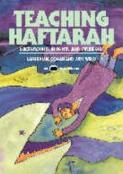- Home
- Play & Learn Home
- Online Enrichment
- Experience Modern Israel
- Israel It's Complicated
- Jewish and Me
- Jewish Holidays Jewish Values
- Jewish Values in Genesis and Jewish Values in Exodus
- Min Ha’aretz
- Our Place in the Universe
- Simply Seder
- The Prophets: Speaking Out for Justice
- Making T'filah Meaningful
- Make, Create, Celebrate
- Yom Haatzmaut Resources
- Hebrew Apps
- About The OLC
- What is the OLC?
- Introduction
- Get Started
- Resources
- OLC Content
- Parent Materials
- See My OLC Classes
- Store
PLANNING AHEAD FOR FAMILY SHABBAT SERVICES
| Download Printable Version (PDF) |
When you prepare thoroughly in advance, you can help ensure vibrant, successful family Shabbat services.

The following suggestions come from the Leader’s Guide for Siddur Mah Tov: A Family Shabbat Prayer Book. This guide for educators, clergy, and lay leaders is packed with suggestions for creating dynamic, successful family Shabbat services. It includes guiding questions for interpreting the artwork in Siddur Mah Tov, and hundreds of ideas for using story-telling, music, movement, and props to make worship services fun and participatory.
Siddur Mah Tov is available now in Reform and Conservative editions, in both paperback and hardcover editions.
THINKING AHEAD
Prepare!
-
Check the calendar: consider the upcoming Torah portion, and note if there are any upcoming holidays (Jewish or secular), or national or local events of interest to the community.
-
When planning the year, schedule special programming, such as Grandparents’ Shabbat or Special Friend Shabbat.
-
Make a list of the prayers you will include and how long you expect each to take. For services for children ages 3 years and younger, 35-40 minutes is optimal. For services for children ages 4 and older, 45-60 minutes is a good length.

-
Practice reading/telling any stories aloud.
-
Review the melodies that you will use in the service. Ask the cantor if you can practice with him or her or listen to recordings of the tunes.
-
Develop short transitions between the end of one prayer and the beginning of another; congregants do not want lengthy introductions to or explanations of prayers.
-
Consider how to adjust the service if the children attending are younger or older than expected.
-
Create backup plans (extra stories, songs, or games) in case you have extra time at the end.
-
Check the weather: a very warm or very cold day can affect attendance as well as the mood of participants. Plan the physical environment accordingly.
Be flexible!
-
Be aware that since participants do not RSVP for family services, the number and types of attendees may constantly change.
-
Remember that children are unpredictable. What works one week might not work the next.
-
Wait a few seconds after asking a question; if you get no response, rephrase your question or move on.
-
A good sense of humor is invaluable. If you forget the words to a song or start singing in a key that is too high for your register, laugh at yourself—it helps you and others feel comfortable. Remember that this is a community experience, not a performance.
-
After the service, take time to reflect alone and with participants on what worked and didn’t work, and make notes for next time.
SETTING UP THE ROOM
Family services can take place in any space. No matter

where you are, prepare the room as a holy space. Consider whether and how to use the following:
-
Chairs (and whether to provide adult and/or children’s seating)
-
A rug or pillows on the floor
-
An Ark and/or a real or toy Torah
-
Prayer books (Toddlers can follow along with a large illustrated prayer book at the front of the room; from kindergarten-age on, children can proudly hold their own prayer book. In all cases, provide adults the opportunity to follow along with their own prayer book.)
-
Other props, such as musical instruments (if permitted on Shabbat in your synagogue), shakers, flags, a play Shabbat set, and puppets
WELCOMING FAMILIES
Before you begin, the service leader and regular attendees can help welcome newcomers and create community in the following ways:
-
Ensure that signs posted for the family service location are clear and accurate.
-
Designate parent ushers to welcome attendees.
-
Greet everyone with a big smile and a short, personal greeting.
-
Be ready to welcome the early birds. Start on time out of respect for those who arrive punctually. Consider opening with a few warm-up songs like “Bim Bam” or “Mah Yafeh Hayom” and doing a formal welcome for the whole group ten minutes into the service. As latecomers arrive, greet them with a smile and a wave while continuing the flow of the service.
-
Warmly welcome all participants, noting that this is an environment where people of all backgrounds, religions, and knowledge levels are welcome and encouraged to participate.
-
Have everyone briefly introduce themselves early on in the service to someone they do not know.
-
Begin the service with a short story or the beginning of a story that can be continued at a later point in the service.
Also in the Leader’s Guide, hundreds of prayer-by-prayer ideas and highlights with background information. For example:
Modeh/Modah Ani
Modeh/Modah Ani is a prayer thanking God for returning our souls to us in the morning. Gratitude is an essential part of Jewish prayer. Note: Boys and men say modeh ani; girls and women say modah ani.

Incorporating Art
Direct participants to look in Siddur Mah Tov at the illustration of the child waking up and ask:
-
What were you thankful for when you woke up this morning?
-
What are you looking forward to today?
Incorporating Movement
-
Guide families in simple physical stretches while singing Modeh/Modah Ani together. Stretching wakes us as we connect our actions to the words of the prayer. You can also incorporate Hebrew, for example, “circle your rosh [head],” “stretch your yadayim [hands].”








